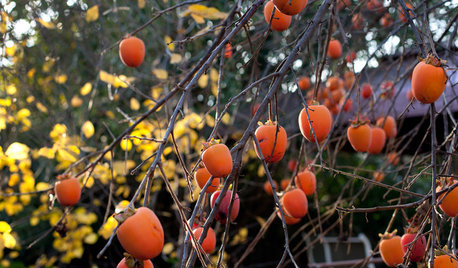persimmon early harvesting to prevent squirrel damage
creekweb
12 years ago
Featured Answer
Sort by:Oldest
Comments (23)
fabaceae_native
12 years agostrudeldog_gw
12 years agoRelated Professionals
Brentwood Landscape Architects & Landscape Designers · Kyle Landscape Architects & Landscape Designers · Signal Hill Landscape Architects & Landscape Designers · Manchester Landscape Contractors · Milford Landscape Contractors · Coram Landscape Contractors · Edinburg Landscape Contractors · Lancaster Landscape Contractors · Mashpee Landscape Contractors · Pahrump Landscape Contractors · Petaluma Landscape Contractors · Wallingford Landscape Contractors · West Haverstraw Landscape Contractors · White Bear Lake Landscape Contractors · Vadnais Heights Landscape ContractorsBradybb WA-Zone8
12 years agoMonyet
12 years agocreekweb
12 years agobennylafleur
12 years agostrudeldog_gw
12 years agoolga_6b
12 years agocreekweb
12 years agomk_in_ohio
11 years agocreekweb
11 years agobennylafleur
11 years agoindicente
11 years agomk_in_ohio
11 years agoindicente
11 years agomk_in_ohio
11 years agoindicente
11 years agoindicente
11 years agobennylafleur
11 years agomk_in_ohio
11 years agocreekweb
11 years agol w
4 years agolast modified: 4 years ago
Related Stories

EDIBLE GARDENSGreat Design Plant: Persimmon
Combining beautiful fruit, vivid fall leaves and low maintenance, this tree is a winner in the garden
Full Story
FRUIT TREESHow to Grow Your Own Persimmons
Sturdy and easy to care for, these trees offer bright fruit through winter — and keeping them in bounds is no sweat
Full Story
GARDENING AND LANDSCAPINGWorld of Design: 10 Home Gardeners Show Us Their Sweet Summer Harvests
From New York to Tokyo, these gardeners have turned their yards, terraces and rooftops into places of bounty
Full Story
HOUZZ TV FAVORITESHouzz TV: See How Early Settlers Lived in This Restored Pilgrim House
Passionate restoration and preservation efforts give a 1665 home an honored place in the present
Full Story
LIFEHow to Outsmart Backyard Critters
Learn to think like a raccoon, skunk or squirrel to keep your home safe and your garden intact
Full Story
GARDENING GUIDES11 Favorite Edibles for Your Cool-Season Garden
Plant crunchy carrots, crisp radishes, tender peas and other vegetables for fall and spring harvests
Full Story
EDIBLE GARDENSSummer Crops: How to Grow Squash
Almost foolproof and with cheerful flowers, squash comes in a wide range of varieties to plant in spring
Full Story
EDIBLE GARDENSHow to Grow Your Own Peaches and Nectarines
Make gardening a little sweeter with these juicy fruits, which you can eat after plucking or preserve for later
Full Story
SUMMER FRUITS AND VEGETABLESHow to Grow Your Own Fresh, Sweet Corn
Here's how to plant and care for your own mini cornfield
Full Story
EDIBLE GARDENSSummer Crops: How to Grow Tomatoes
Plant tomato seedlings in spring for one of the best tastes of summer, fresh from your backyard
Full StoryMore Discussions









Monyet